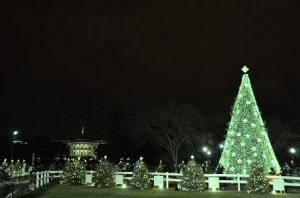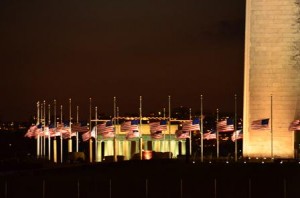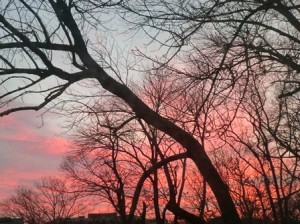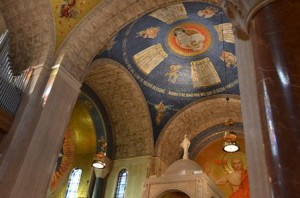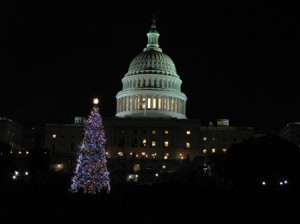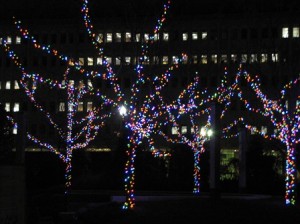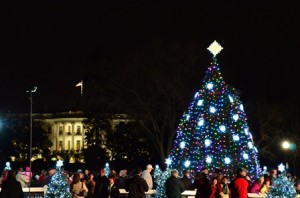|
Homily for the Third Sunday of Advent
December 16, 2012
I had a homily all prepared for this weekend and was ready to give it until the horrific event of this past Friday at Sandy Hook Elementary School in Newtown, Connecticut. That changed everything. Somehow, I knew I couldn’t preach today without saying something about that event that has forever altered the lives of those families and shaken our nation to its very foundations.
This is the Sunday we call Gaudete Sunday, “Rejoice Sunday,” but how are we to rejoice in the wake of that unspeakable tragedy? And how are we to find a path forward amid such darkness, death, such inexplicable evil?
And those families who lost those twenty beautiful little children and other loved ones, too: how are they — in this season when we celebrate light shining in the darkness, hope in the midst of despair — how are they to find any light, any hope, at all?
I have no ready answers for any of this. I don’t. All I know is that at moments like this we need to come together in prayer, and we need to reach out in love and prayer and in every way we can to those sorrowing, grief-stricken families. Perhaps in doing so, we will light for them a flame of hope no matter how tiny or dim.
That is what we do this morning. We come together as believers or as people who struggle to believe, and we find strength and comfort in simply being together, praying together, and in celebrating together the rituals of our faith. We listen to Advent readings that dare to speak of rejoicing even as we are feeling only great sadness. We want to believe, but find it so hard to believe, the words of the Prophet Zephaniah who proclaimed to the people, “the Lord is in your midst…He has removed the judgment against you…you have no further misfortune to fear… you need not be discouraged.” And we want to heed the words of St. Paul in his letter to the Philippians: “Rejoice in the Lord always. I shall say it again, rejoice! Have no anxiety at all.”
But how — in this broken world of ours — how is it possible to rejoice? How is it possible not to fear or to be discouraged?
One thing is certain: we cannot keep hope alive by ourselves. We can only do it with God’s help and with the help and support we give to each other in community.
And then, I think it may be helpful to know a little background to those readings. When the prophet Zephaniah spoke his words of hope to the people of Israel he was speaking to people who were in the midst of some gravely troubling times. They had suffered appalling losses to foreign powers and had been brought low and humiliated time and again by ruthless forces of occupation that made a mockery of their faith and ridiculed their religion. It was against that background that Zephaniah told them not to fear or be discouraged, but to “rejoice with all your hearts because the Lord has taken away all judgments against you….”
And maybe it’s helpful, too, to know that when St. Paul wrote his letter to the Philippians and told them to “rejoice in the Lord always… and to have no anxiety about anything,” he was writing to them from Rome where he was in prison awaiting trial.
nd then there’s today’s passage from Luke’s gospel. The crowds, eager for answers, ask John the Baptist, “What shall we do?” And the Baptist answers by telling them not to worry about themselves but to have a concern for and to take care of others. If you have two cloaks, he says, share with the person who has none at all, and do the same with any food you may have. And when tax collectors and soldiers question him about what they should do, he tells them to be just and honest in all their dealings.
“What shall we do?” That’s our question, too, isn’t it? We really want to know what we are to do when we feel so helpless, so adrift on some very stormy seas. And it’s hard not to wonder what the Baptist would tell us if we had the opportunity to ask him ‘what we are to do?’ I can’t be certain, of course, but something tells me that he would speak to us about regaining our moral compass as a society, about shunning the ways of violence that are aided and abetted by the easy availability of the most lethal kinds of assault weapons. And I think that John the Baptist might well point his prophetic finger at us and tell us to get our priorities straight and to find humane, enlightened ways to help individuals and families who live with mental illness.
That’s my hunch. And, I know, none of what I’ve said makes this moment any easier, nor does it soothe our sorrows or calm our fears. But maybe it offers a tiny glimmer of hope. And maybe it gives us a new resolve to embrace our faith more intentionally and to live it more authentically. We need each other and we need to do more than just wring our hands about terrible things that happen. Those things happen in a society that we are part of, a society that we have the power to influence and to change — maybe not in big ways, but certainly in real ways. And we are part of a Church that preaches the gospel of love and justice and peace, but this gospel must first become our gospel, our way of life, before we can ever hope that it will have its impact on society.
My friends in Christ, on this Advent Sunday, in the midst of a world with problems and challenges both agonizing and seemingly unsolvable, a world where glimpses of light are all too quickly eclipsed by darkness, in this vastly imperfect world of ours and of these vastly imperfect lives of ours, there is still room for hope — great hope, because God’s love has always been more powerful than even the greatest of human evils and it always will be.
Advent dares to speak of light in the midst of darkness, hope for the world in the face of a tiny child, hope for the world in faces like yours and mine. Hemingway once wrote that “life breaks all of us, but some people grow at the broken places.” May the Body of Jesus broken for us in this Eucharist bring healing to all our broken places, and hope to broken hearts, and to our broken world!
Father Michael G. Ryan
Pastor
|
 So many are leaving for holiday travels today. I hear roller suitcases on the sidewalk below my window and know that folks are heading out to the airport after work today. It is a wonderful time of year to be together and, in most cases these days, being together means travel of some kind or another. So, travel safely and remember to pack patience and joy so that we don’t get annoyed by the normal disturbances of modern travel – to say nothing of the weather!
So many are leaving for holiday travels today. I hear roller suitcases on the sidewalk below my window and know that folks are heading out to the airport after work today. It is a wonderful time of year to be together and, in most cases these days, being together means travel of some kind or another. So, travel safely and remember to pack patience and joy so that we don’t get annoyed by the normal disturbances of modern travel – to say nothing of the weather! One of our sons will be joining us here in DC for the holidays and we are excited for his arrival. Because we will be spending time together, celebrating, and visiting local sights, I will not be blogging for the upcoming week.
One of our sons will be joining us here in DC for the holidays and we are excited for his arrival. Because we will be spending time together, celebrating, and visiting local sights, I will not be blogging for the upcoming week.